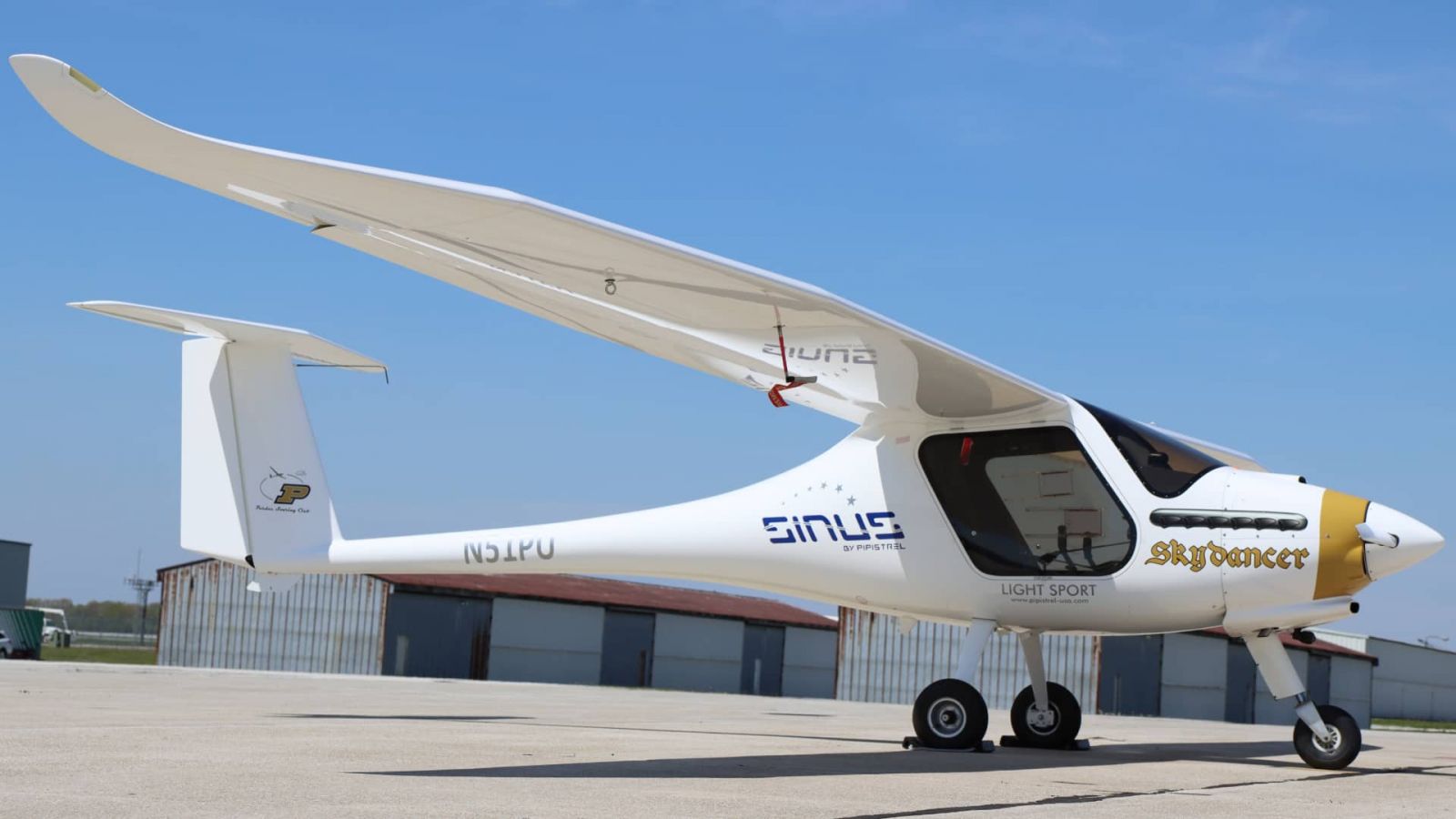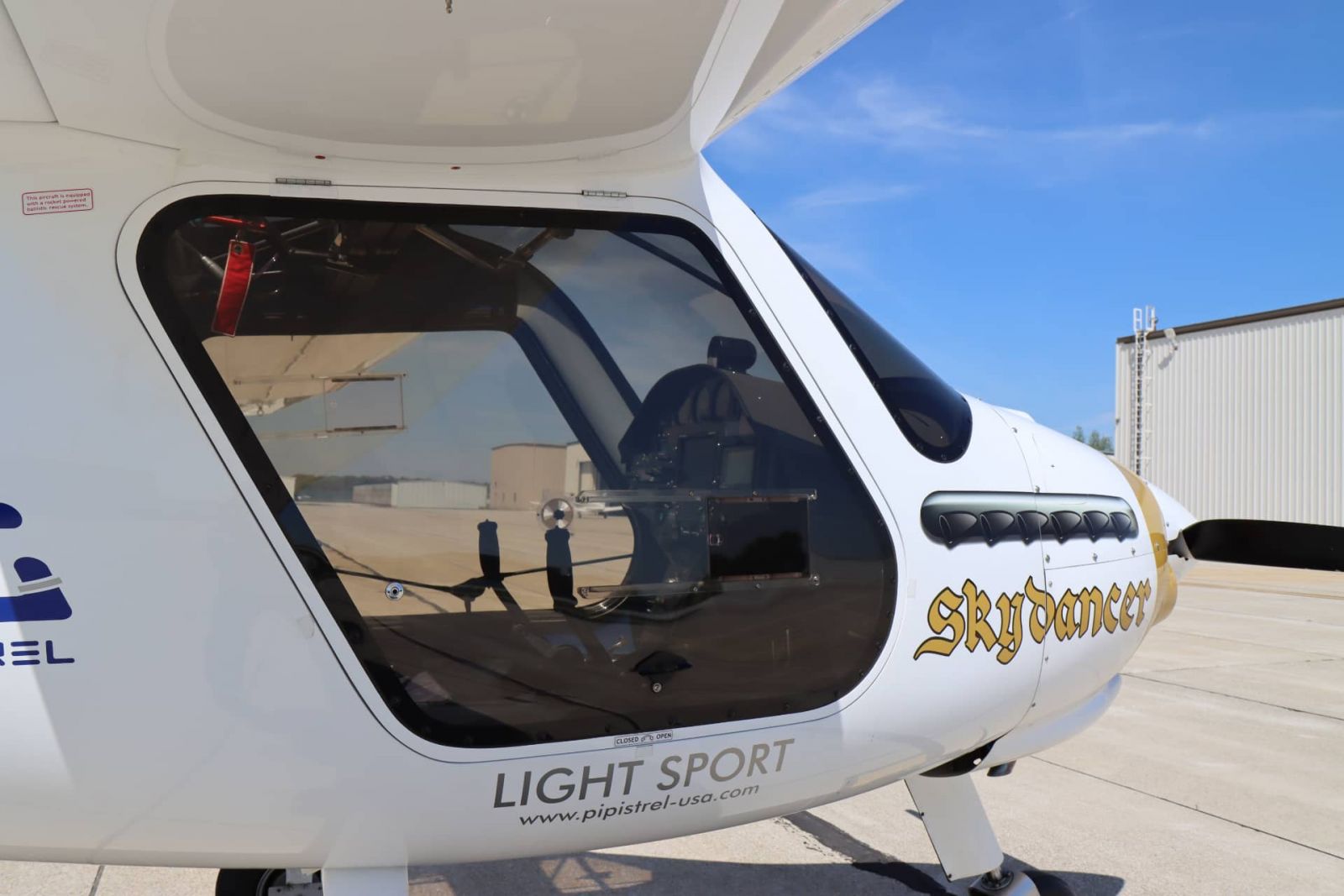
Staff from the Purdue Polytechnic Institute’s School of Aviation and Transportation Technology (SATT) collaborated with aircraft manufacturer Pipistrel and the Federal Aviation Administration (FAA) to convert a glider aircraft into an airplane. The reconfigured aircraft trains disabled, would-be pilots through the Able Flight program.
Before the coronavirus pandemic shut down nearly every element of human interaction, Purdue had been gearing up for the summer session of Able Flight, a program for aspiring pilots with physical disabilities. Able Flight is a non-profit organization based in Chapel Hill, N.C., which works with Purdue’s SATT to provide men and women with disabilities the opportunity to attain a pilot license. Past Able Flight participants include people who are hearing-impaired and many who ambulate with the help of wheelchairs. These types of disabilities tend to slow people down as they interact on the ground; however, in the air, the aircraft treats everyone as able-bodied. Purdue was looking forward to hosting this summer program for the eleventh consecutive year.
“It normally takes between nine months and a year for a member of the general public to get a pilot’s license,” said Jonathon Ziulkowski, a senior lecturer and the flight operations quality assessment manager at Purdue. “But the Able Flight program offers participants a chance to earn their sport pilot license in just eight weeks. It’s a very worthwhile program.”
The summer Able Flight program is based on the use of light sport aircraft, which are also known as “LSAs.” They are generally two-seat aircraft, with a maximum weight of 1320 pounds, a maximum speed of 138 mph, and are perfectly fit to the mission of Able Flight program because the planes are small, lightweight and can be easily adapted for use. LSAs require a Sport Pilot Certificate (license) to operate. Sport pilots do not need an FAA medical certificate to fly an aircraft. They can use their current driver's license as proof that they are medically fit to operate these LSA aircraft.
“Purdue had only one light-sport aircraft in our fleet of training aircraft, which left us reliant on the donation of additional aircraft for use during the summer for Able Flight,” said Ziulkowski.
This year, Purdue was working to identify a light sport aircraft with a side-by-side seating arrangement to accommodate the training of a deaf student who needed to easily communicate with the flight instructor. As part of his “flight ops” responsibilities, Ziulkowski was reviewing the SATT’s assets and their utilization, when he encountered a glider that had been donated to the Purdue Soaring Club in 2014.
“It was being used, but generally was not being used over the summer months, when the majority of students were not on campus for summer break,” Ziulkowski said of the glider. The glider had been built by Pipistrel, an aircraft company headquartered in Slovenia.

“Our Pipistrel Sinus is a motor-glider that’s powered with an engine, so it’s different from most gliders that people tend to think of,” said Ziulkowski. “It self-launches instead of requiring a tow plane to lift it into the air. Then, once the glider reaches the proper altitude, the pilot shuts off the engine to glide.”
The Pipistrel Sinus craft is lightweight, motorized and – also unlike most gliders – features side-by-side seating for a pilot and student. Ziulkowski immediately saw its potential as a light sport aircraft for the Able Flight program. He worked with the glider’s manufacturer in Slovenia and with contacts at the FAA to gain approval to physically modify the glider into a light sport airplane.
“Gliders have long wingspans, so Pipistrel swapped out the wing tips for a shorter pair, reducing the overall wingspan by eight feet,” said Ziulkowski. “Pipistrel also provided directions to deactivate the ability for the propeller to be stopped from spinning mid-flight.” These modifications are not permanent, so the light sport airplane can be retrofitted to its original glider status.
“The equipment swap takes about 30 minutes and the paperwork required by the FAA takes another 30 minutes. We go from a glider to an airplane in about an hour,” Ziulkowski said.
Ivo Boscarol, founder and president of Pipistrel Group, is pleased with the innovation. He dubbed the revised Pipistrel glider, the “Sinus Max.”
“For the last 30 years, we have always developed aircraft in ways to make them accessible to as many pilots as possible worldwide, regardless of different legislation, local restrictions or individual preferences,” said Boscarol. “We are proud that such an esteemed organization as the Purdue University aspires to be our launch customer for this concept and expect that other academies across America will likely follow suit.”
Ziulkowski credits everyone involved with being open-minded to the innovation. “The Sinus Max now gives Purdue the ability to support Able Flight, without having to bring in new aircraft for our instructors and staff to learn in a short period of time,” Ziulkowski said. “Additionally, we are excited to make use of this aircraft that would normally not be used during the summer.”
Additional information
- A new era of flight instruction at Purdue takes wing (Purdue News)
